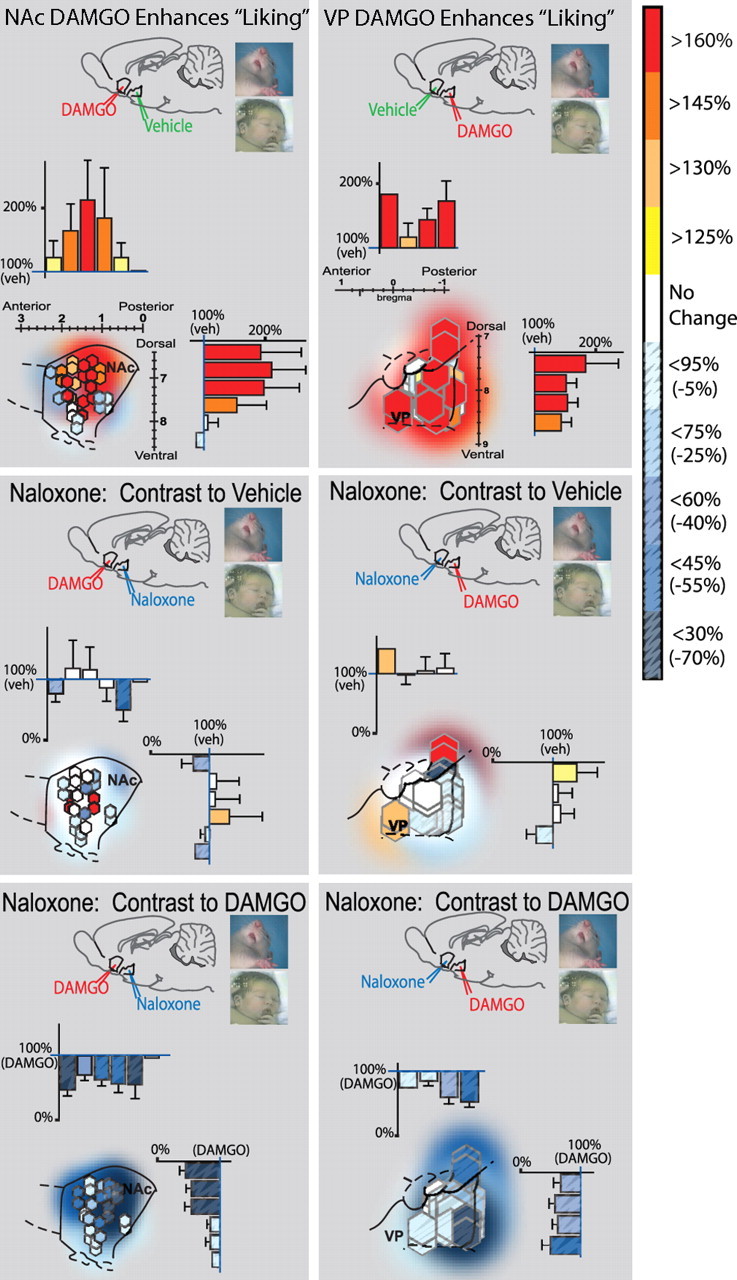Figure 4.

Fos plume map of hedonic “liking” effects of opioid activation (DAMGO) and blockade (naloxone). Sagittal views show inner Fos plumes as hexagons and outer plumes as surrounding shading (each unilateral site mapped separately is 2 symbols per rat). Symbol colors show percentage increase (yellow–red) or suppression (blue, stippling) of “liking” reactions elicited by sucrose after each DAMGO/naloxone combination [compared with either vehicle levels (top and middle) or “liking” enhancement after DAMGO alone (bottom)]. Bars along rostrocaudal and dorsoventral levels show intensity of drug effects within each 0.4-mm-wide level (mean ± SEM percentage of vehicle levels; a plume contributes to more than 1 bar if it straddles multiple levels). Left column shows “liking” effects of NAc–DAMGO and VP–naloxone combinations. DAMGO in NAc enhanced sucrose “liking” over vehicle levels (top left; contrast for DAMGO vs double-vehicle control). Addition of VP–naloxone to NAc–DAMGO blocks NAc–DAMGO enhancement over vehicle control levels (left middle; contrast to double-vehicle control). Addition of VP naloxone to NAc–DAMGO therefore reduced “liking” reactions to below levels produced by NAc–DAMGO alone (left bottom; contrast to DAMGO alone). Right column shows “liking” effects of VP–DAMGO and NAc–naloxone combinations. VP–DAMGO alone (NAc–vehicle) enhanced “liking” reactions to sucrose taste over double-vehicle levels (top right; contrast to double vehicle). Adding naloxone to NAc blocked VP–DAMGO ability to enhance “liking” reactions over vehicle (middle right; contrast to double vehicle) and therefore reduced “liking” to lower levels than after VP–DAMGO alone (bottom right; contrast to DAMGO alone). Sagittal structure outlines are modified from Paxinos and Watson (1998).
